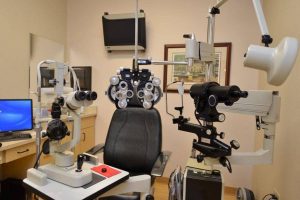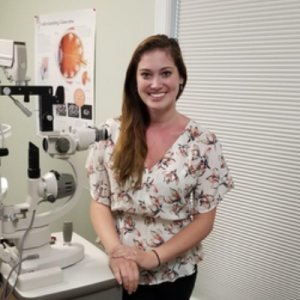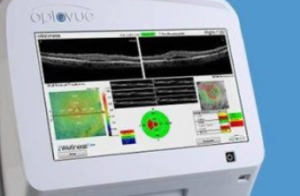Over 1 in 4 of all people across the globe wear glasses or contact lenses – this means they have a refractive error.
But don’t worry if you are one of the 25% of the global population that has a refractive error, as this common vision problem can be both managed and corrected — often, with the use of glasses or contact lenses.
Refractive errors can only be managed correctly after an eye exam by an eye doctor or optometrist.
What is a refractive error?
A refractive error occurs when you notice blurry vision, either at a distance, such as when driving, or watching TV, or close up, such as when reading, or using a computer or other digital device.
The error is caused when light entering the eye is not focused correctly, by the lens or cornea, onto the retina at the back of the eye.
This unfocused light can occur due a number of factors, including:
- Length of the eye overall
- Shape of the cornea or lens
- Inability of the lens to adequately change focus
The four most common refractive errors are:
- Myopia (nearsightedness)
- Hyperopia (farsightedness)
- Presbyopia
- Astigmatism
How is myopia managed?
Myopia, also known as nearsightedness, is a refractive error in which either the eye is too long or the cornea of the eye is too strong.
As a result, light entering the eye is focused too far forward in the eye, and appears blurry when it reaches the retina.
Images viewed from a distance will appear blurry or distorted, while images closer to the viewer will appear clearer.
The most common ways to correct myopia are with use of eyeglasses and contact lenses or laser refractive surgery.
Refractive laser surgery, such as LASIK, is an effective option for adults who would like to correct their myopia permanently and eliminate the need for glasses or contacts.
This is usually only recommended for adults over the age of 21, whose prescription has not changed for over 2 years.
Myopia Management
High levels of myopia have also been linked to development of glaucoma, retinal detachment and cataracts later in life.
Eye doctors can provide a personalized program of myopia management, which can slow or prevent the progression of myopia.
This may be accomplished through various methods, including ortho-k contact lenses, multifocal lenses or atropine eye drops.
SEE RELATED: The Importance of Pupil Exams
If you feel your eyesight isn’t what it’s supposed to be, contact your local eye doctor to see how they can help.
How is hyperopia managed?
Hyperopia, also known as farsightedness, is a refractive error caused by a number of issues, including the eye being too long, the lens or cornea being too flat in shape, or the lens of the eye missing entirely.
Images viewed from up close will appear blurry or distorted, while images further away will appear clearer.
For hyperopia, eyeglasses may only be necessary for prolonged near work, such as when reading, using a computer or studying.
In the case of hyperopia, a cycloplegic refraction during an eye exam may be required to remove the possibility of subconscious focusing, and enable the eye doctor to obtain a correct optical prescription.
Eyeglasses and contact lenses are the most common ways of correcting hyperopia.
How is presbyopia managed?
Presbyopia is a refractive error in which, due to a hardening and loss of elasticity in the lens of the eye, near objects seem blurry and distorted. The eye’s ability to switch focus between near and distance vision can also be affected.
Presbyopia often affects a person’s ability to read small print, such as in books or on a menu. Often, a person experiencing symptoms of presbyopia will need to hold these materials further away in order to see them clearly.
The most common treatment for presbyopia is eyeglasses or contact lenses. Depending on your specific needs, these can be simple reading glasses, bifocals or multifocal lenses.
Presbyopia can also be treated with surgical insertion of intraocular lenses and corrective laser surgery.
How is astigmatism managed?
Astigmatism is a refractive error in which the lens of the eye is irregularly formed, causing blurry or double vision at all distances. Astigmatism can also cause problems with night vision, eye strain and headache.
Treatment for astigmatism includes contact lenses and eyeglasses that address the particular curvature of the cornea.
Occasionally, custom-made contact lenses or RGP lenses might be necessary to provide clear and comfortable vision.
LEARN MORE: Guide to Eye Exams
If you feel your eyesight is blurry, or not as clear as it used to be, schedule an appointment with an eye doctor.
Don’t worry if you are one of the 25% of the global population that has a refractive error.
This common vision problem can be both managed and corrected — often, with the use of glasses or contact lenses.










